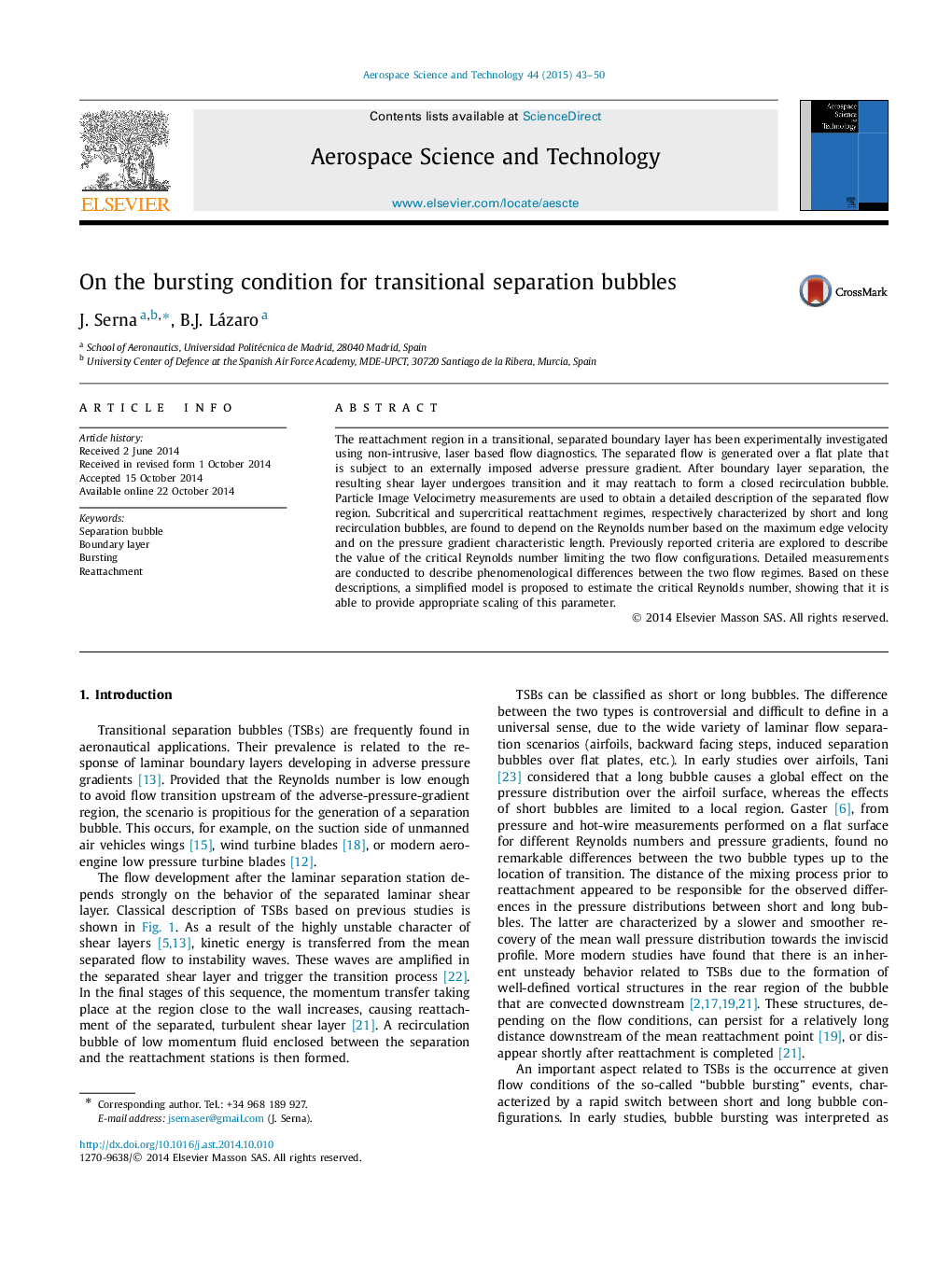| Article ID | Journal | Published Year | Pages | File Type |
|---|---|---|---|---|
| 1717846 | Aerospace Science and Technology | 2015 | 8 Pages |
The reattachment region in a transitional, separated boundary layer has been experimentally investigated using non-intrusive, laser based flow diagnostics. The separated flow is generated over a flat plate that is subject to an externally imposed adverse pressure gradient. After boundary layer separation, the resulting shear layer undergoes transition and it may reattach to form a closed recirculation bubble. Particle Image Velocimetry measurements are used to obtain a detailed description of the separated flow region. Subcritical and supercritical reattachment regimes, respectively characterized by short and long recirculation bubbles, are found to depend on the Reynolds number based on the maximum edge velocity and on the pressure gradient characteristic length. Previously reported criteria are explored to describe the value of the critical Reynolds number limiting the two flow configurations. Detailed measurements are conducted to describe phenomenological differences between the two flow regimes. Based on these descriptions, a simplified model is proposed to estimate the critical Reynolds number, showing that it is able to provide appropriate scaling of this parameter.
